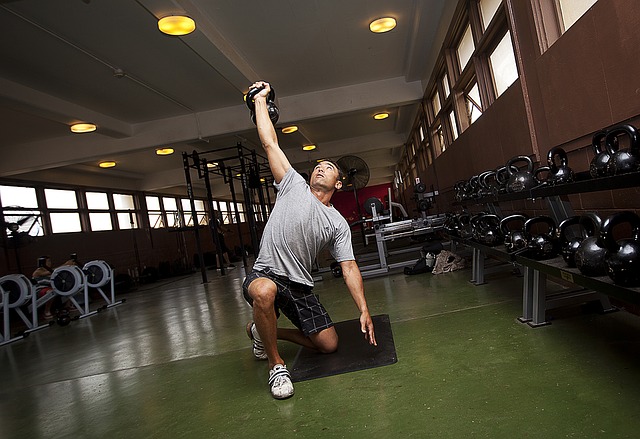HOW ERGONOMICS AFFECT YOUR HEALTH
The word “Ergonomics” originated from two Greek terms which meant “work laws.” Today, we define ergonomics as the study of working practices-the discovery of methods to ensure that jobs fit the people working within them physically. The more we adapt our workspaces to the concept of ergonomics, the less likely it is that ergonomic stressors and disorders have an impact on our productivity, happiness and health.
Ergonomics focuses on the work environment-taking into account the design and function of the equipment, lighting, controls, screens, and workstations to suit the employee’s physical needs. However, while numerous studies have shown how beneficial ergonomics can be, many workers and employers still do not understand how a lack of ergonomics has a detrimental effect on health.
What Can Happen If You Ignore Ergonomics?
An essential factor in maintaining physical fitness and optimizing work-related activity is proper ergonomic design. The ergonomics study provides important guidance for preventing disease and injury, allowing individuals to avoid problems such as excessive strain and discomfort. Some of the most common injuries involving unsuitable ergonomics include hand, wrist, leg, neck, back, head, and eye pain. For some individuals, perhaps the most alarming areas surround vision, and musculoskeletal problems.
The body’s musculoskeletal system consists of structures that help you move around-such as ligaments, tendons, joints, bones and muscles. Work-related MSDs are one of the leading causes of injuries and illnesses in the world leading to lost working days. Regardless of the industry in which you are, workers are exposed to MSD risk factors in many different occupations-from working in awkward body postures to repeatedly performing similar or identical tasks. Examples of ergonomic related musculoskeletal problems include:
- Carpal Tunnel Syndrome – an issue that effects the nerves in the wrist after repetitive pressure upon the nerve for some time.
- Bursitis – an inflammation of the small fluid sac that lubricates the areas wherein tissues, bone, muscle, skin, tendons, and ligaments rub against one another.
- Tendon Injury – damage to the strong fibers used to connect bone and muscle – most tendon injuries happen close to joints – such as around the shoulder, ankle, knee, or elbow.
- Muscle Strains – pain caused by overstretching muscles – usually around the back, neck, and shoulders.

Other Ergonomic-Related Health Issues
The problems with bad workstation ergonomics are not just limited to musculoskeletal problems. Nonetheless, a significant portion of poor ergonomics-related health problems stem from poor posture-an concern that most people overlook but that can lead to:
Greater levels of stress – studies conducted by Harvard University discovered that people with better posture had 25% less cortisol (the stress hormone) in their systems.
Decreased happiness – The way you sit may not seem important to your mood, but research has shown that slouching can have a significant impact on your health, alongside the effects of poor blood circulation.
Blocked digestion – Sitting in a crunchy position for longer periods of time folds up the intestines-leading to poor digestion and increased risk of stomach problems.
Many ergonomics – related injuries can happen gradually – over a long period of time, and often in a manner that means you don’t notice them until the discomfort has grown to a significant level. The impact of numerous small stresses and injuries on the body-referred to as CTDs, or cumulative trauma disorders, causes various disorders. In today’s electronic work environment, where most people spend several hours a day hunched over a keyboard or working on a computer, these particular issues are most common. Poor posture and ergonomics are the leading cause of CTDs, but it should also be noted that there are several factors which can also exacerbate their progress, including personal risk factors, insufficient recovery time, excessive force, repetitive motion, and touch stressors.
Those suffering from CTDs can begin to experience various symptoms within the affected area of their body, including pain, aching, and numbness, swelling and tingling.
How Can You Protect Yourself?
It’s easy to see that poor ergonomics can impact your lifestyle and wellbeing enormously. Thankfully it doesn’t have to be a difficult task to set up your workstation. Workstations, for example, which consist of screens and keyboards-such as computer desks, would allow non-computer and computer work. The idea is to set up an adjustable station, enabling workers to change their posture according to their needs. Adjustable display screens, flexible copy holders, proper lighting, adjustable and detachable keyboards and, of course, the right ergonomic furniture should include ergonomic offices.
Are You An Athlete Or Desk Professional Experiencing Pain?
Beyond Ergonomics gives athletes and desk professionals answers to their pain problems. Body imbalances, repetitive use, and lack of movement are the cause of many injuries and pain. Beyond Ergonomics helps you discover your imbalances and create change. MedicinEvolution’s purpose is to reduce pain and other symptoms that you haven’t had luck with. MedicinEvolution Bodywork Beyond Massage is the solution for many problems plaguing your body. Make your appointment today!





